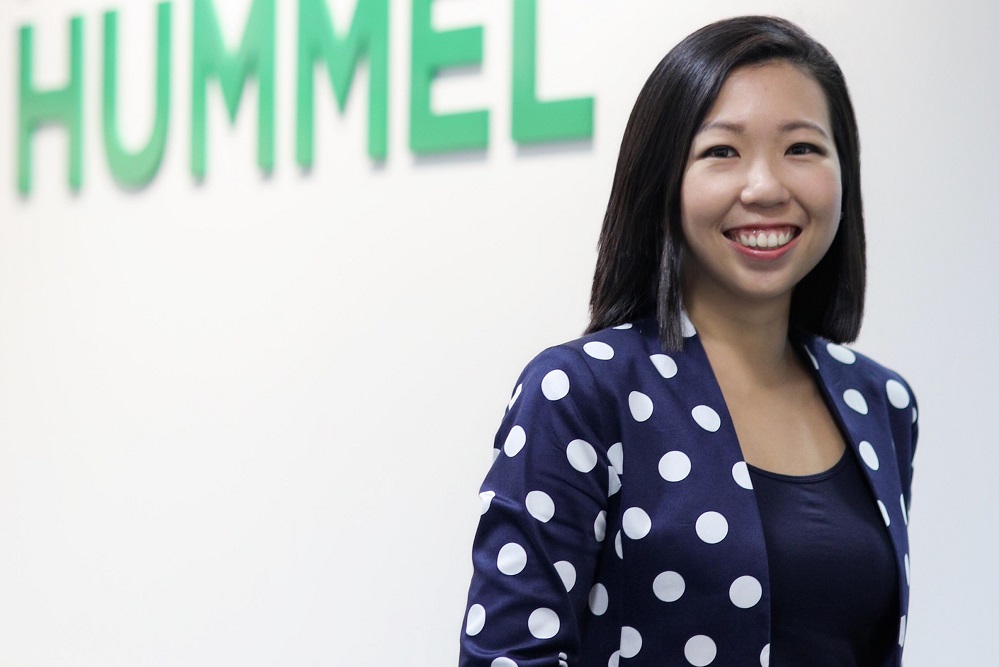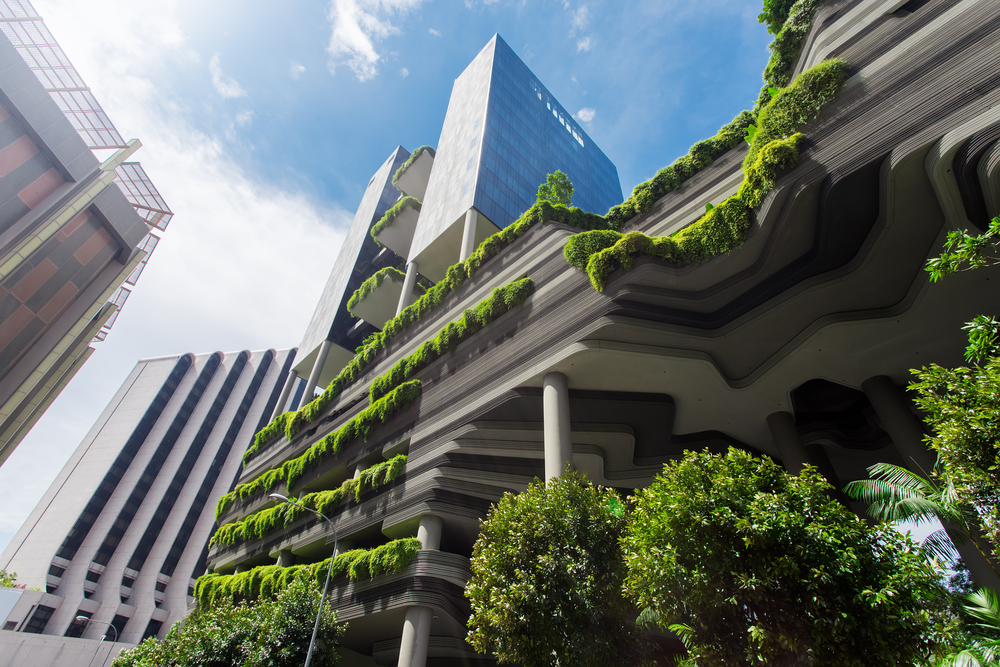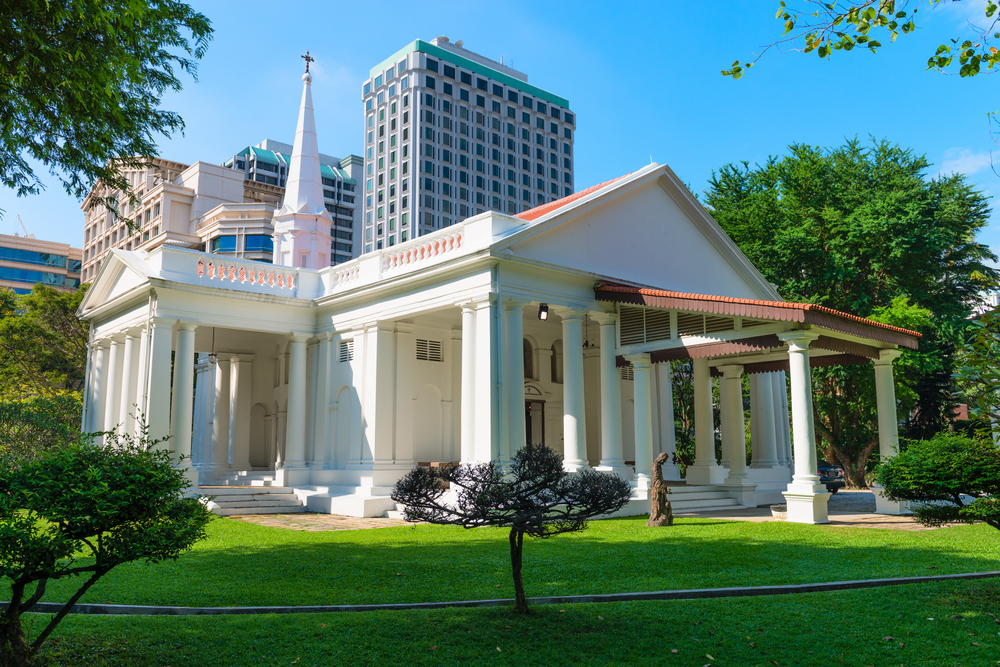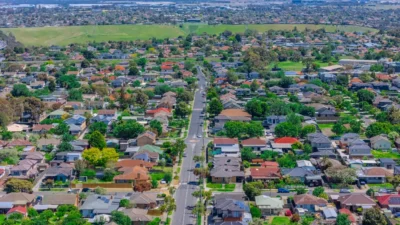Meet the sustainability guru pushing Asia’s green building agenda
As the one-time regional head for the World Green Building Council, Singaporean ex-architect Joelle Chen is passionate about the requirement for greater eco-mindfulness within the property sector

Joelle Chen has a way of winning you over with her enthusiasm. And it is this spark—on top of her obvious credentials—that’s driven her rise through the sustainability stratosphere over the last 15 years.
Describing herself on Twitter as a “recovering architect” and “accidental economist interested in the art of persuasion”, it’s clear Chen takes her role as a thought leader in the green-building ecosystem seriously. But the effervescent way she presents her views makes the multi-layered world she inhabits far more digestible.
While architecture provided the perfect springboard for Chen’s later career, she displays a certain disenchantment with the profession. Having learnt the importance of sustainability and regeneration—the concept of creating space for life to flourish and renew, embracing everything from living things and energy systems to communities and businesses—she became disillusioned with the “dissonance” between theory and practice. There’s a great deal of waste in the construction process, and the sector’s reluctance to change frustrated Chen.
Returning to business school for an MBA in marketing and strategy seemed to curtail the discontent. From there, Chen progressed to the Smart Sustainable Cities team at Singapore’s Economic Development Board (EDB), where she secured investment from companies interested in the “smart city” concept and worked with development bodies on energy-efficient innovations to meet the city-state’s sustainability targets.
In 2017, Chen became Asia-Pacific head for the World Green Building Council (WorldGBC), Through her leadership, an additional 4 green building councils in the region committed to a net zero vision (New Zealand, Singapore, Hong Kong and Indonesia), and one of the largest companies in India, Godrej, became the first in Asia to join the project.
Finally tying together her advocacies in green building, technology, and wellbeing is Chen’s latest role: director of global partnerships and marketing for German-headquartered company MANN+HUMMEL, where she promotes the idea of cleaner air to facilitate healthier living. Who better then to ask about Asia’s drive towards a sustainable future?
Singapore’s architectural landscape has continuously changed over the years—what were the projects that inspired you the most?
I love historical buildings that have been given a new lease on life through sensitive conservation. The Armenian Church, for one, is a calming presence in the city centre—it’s intimately scaled and very inviting. There’s also the National Museum of Singapore—a great community space, and not just for highbrow art and culture.
My current home, The Interlace, fosters community through the spaces it created. Instead of tower blocks, the architect [Ole Scheeren in collaboration with Dutch firm OMA] designed six-storey stacks in a hexagonal formation across varying heights, creating large courtyards and open areas for greenery. These not only cool down the entire site, but also create spaces for people to gather.
Can you tell us more about your previous role with Smart Sustainable Cities?
I developed “living lab” platforms, which required visioning with property developers such desired outcomes as energy- and resource-saving targets or design strategies to enhance thermal comfort. It was like being a tech scout—[you] learn from different industries like utilities, transportation and technology, and filter out the solutions to be tested.

When it comes to sustainable architecture in Singapore in 2019, is it competing or leading in Asia at a level you’re satisfied with?
It depends [on the metrics.] From an aspirational perspective, it should be one that aims to create as little environmental impact, and as much social and economic impact [as possible]. Singapore is good at maximising economic value, but still has a social and environmental agenda—green, communal, and connected.
In Asia, developers used to chase after certification as a way to differentiate their properties. Now that regulations have caught up, it’s more about compliance. However, to cap global temperature rise to below 2ºC and ideally below 1.5ºC, governments and businesses must do much more.
I am personally dissatisfied with the speed of change and the general lack of ambition. Many companies wait for regulation before they act; and governments are not willing to do it, for a range of concerns: competitiveness, job displacement, lack of investment capital, capability issues. All valid, but unfortunately a very short-term way of thinking.
Your work touches on broader aspects of urban living, such as regeneration, zero-carbon metrics, and air quality. Is it difficult to influence decision-making at a macro level?
Ultimately, it’s about, “What’s in it for me?” I believe environmental improvements—greener buildings, better air quality, increased biodiversity, walkability—are features of a liveable city. Those are the broad personal benefits, but it takes time, effort, and a “woke” mentality. You can’t be indifferent. Quoting Oscar Wilde, “To live is the rarest thing in the world. Most people exist, that is all.” We have to realise this is a choice. [Unfortunately people find it] extremely difficult to get over mental hurdles that they cannot make an impact. People are much more powerful and influential than they think they are, and have more ability than they give themselves credit for.

Could you explain the initiatives put in place to cut energy emissions, particularly through green building, by 2030?
There were a few major events that point to 2030. Firstly, the Paris Agreement of 2015, where 175 parties (174 states plus the European Union) agreed that globally, temperature rise must be capped at 2ºC, and ideally under 1.5ºC, compared to pre-industrial levels. There’s consensus that globally, we have to reach zero emissions between 2030 and 2050. Second, the launch of the 2030 Agenda for Sustainable Development, and the associated 17 sustainable development goals and 169 targets. There are 10 goals relevant to building and cities, such as good health and wellbeing; industry, innovation and infrastructure; and climate action. There’s also the Sustainable Singapore Blueprint launched in 2008, and updated in 2015, which forms part of Singapore’s response to the Paris Agreement.
More: Singapore’s former budget terminal takes flight
We’re already seeing the impact of these events. In Singapore, the Building and Construction Authority issued the Super Low Energy challenge, one of the pathways towards zero-carbon buildings, and also a new Green Mark for Healthier Workplaces to connect green-building benefits to individuals’ health. Globally, there’s increasing awareness of the impact of outdoor air pollution—how it is caused by increasing energy demands, and meeting those demands through fossil fuels and coal (36 percent of global energy is consumed by buildings), and how it has an impact on indoor air quality.
How has environmentally friendly building progressed across Southeast Asia?
There are good learning points from every country. We have to look at it from the perspective of development cost and operational cost. Usually there is a split incentive issue for developers, as some environmentally friendly features are more expensive to install. If it is an owner-occupied building, the decisions are more straightforward.
More: A Singaporean president’s son comes into his own
In terms of operational costs, it depends on the energy prices and who pays the bills. In Manila, energy prices are so high that most office buildings are pretty energy-efficient, in order to reduce the cost of operations. In Singapore there is little incentive because energy bills are only about 1 percent of tenants’ operating expenses.
Hence, it really depends on developer-occupier incentive issues, who foots the utilities bills (energy, water, waste removal), how much utilities cost, how different stakeholders cooperate, and the rate of development in the country.
You’re interested in the intersection between sustainability, health, well-being and technology. How does your new role achieve that?
I’m trying to answer the same question—“How can I change the minds and improve the lives of more people through better buildings, while creating a positive impact on our planet?”—albeit from a different perspective.
At the EDB, it was about influencing corporate decision-makers and leveraging the ability of businesses to create a positive impact on the economy and environment; at WGBC, it was about influencing corporate decision-makers to do the right thing for the environment while improving their bottomline.
At MANN+HUMMEL, I hope to create a more direct impact: improving people’s lives through better, healthier air. Through the internet of things, we make indoor air quality (IAQ) visible to end users and help them be aware of the impact of the air that they breathe. Through digitalisation and big data, we provide intelligence in terms of how to improve not only the IAQ and people’s health, but also to reduce energy consumption. We’re trying to help corporates understand that green and healthy buildings have a positive impact on the money they spend on their employees.
This article originally appeared in Issue No. 153 of PropertyGuru Property Report Magazine
Recommended
Inside Asia’s luxury resort residences that are redefining high-end living
Asia’s resort residence market is witnessing a shift as investors eye larger, multifunctional units
How joining BRICS could give Thailand and Malaysia a new economic edge
Thailand and Malaysia are eyeing membership in the bloc of emerging nations
How Modi’s real estate reforms are transforming India’s housing market – and what’s next
A coalition led by the strongman prime minister Narendra Modi is looking to consolidate gains in the property market
Why Japan’s new interest rates might spark a transformation in Niseko’s property market
A new era for Niseko’s wintry property market dawns with the sunset of Japan’s negative rates regime








